Approach to the Colombian educational reform of 1931 - 1932
Keywords:
teaching methods, school inspection, German mission, public instruction, educational reformAbstract
By 1930, the economic difficulties in Colombia were undeniable, part of the crisis was evident at the educational level: high illiteracy rate, insufficient school structures, few teachers, most of them poorly trained, as well as a high lack of protection in rural areas.
schooling in the countryside.
Faced with this difficult situation, President Enrique Olaya Herrera took up the experience of the German Mission headed by Julius Sieber, which had a recent success in the Department of Boyacá, as well as the leadership of the Minister of Education Julio Carrizosa Valenzuela, who accompanied by the pedagogue Agustín Nieto Caballero, gave a new approach to education; both from the law and from a real knowledge through the diagnosis they made in their field work.
The efforts they achieved at the legal, curricular, pedagogical, didactic and infrastructure levels were again insufficient and did not achieve the desired impact, due to the fact that the 1932 reform had little applicability; primary schools continued to be divided, economic funds were scarce, and the purchase of new schools was not enough.
economic funds were scarce, the purchase of didactic and teaching material for arts and crafts was very little.
The baccalaureate was fundamentally classical, the graduates renounced the universities to become school teachers. The efforts made at the highest levels did not bring about any significant change, therefore, the renovation of the educational sector would continue to be postponed for a few more years.
References
Arismendi Posada, I. (1989). Presidentes de Colombia 1810-1990. Bogotá: Planeta.
Bejarano, J. A. (1982). La economía colombiana en el siglo XX. En: (Jaramillo) (Ed.). Manual de historia de Colombia. Tomo III. Bogotá: Instituto Colombiano de Cultura.
El Magisterio. (1932, 24 de junio). Educación, primer año. En: El Magisterio, Bogotá, 4, 193-194 y 245-246.
Helga, A. (1987). La educación en Colombia 1918 –1957. Bogotá: CEREC
Jaramillo Uribe, J. La educación durante los gobiernos liberales 1930–1946. En: (Jaramillo) (Ed.). Manual de historia de Colombia. Tomo III. Bogotá: Instituto Colombiano de Cultura
Latorre Rueda, A. & Olaya Herrera, B. (1985). Un nuevo régimen. Nueva historia de Colombia. Tomo I. Bogotá: Planeta
MINISTERIO DE EDUCACIÓN NACIONAL (1932). Memoria de 1932. Bogotá: MEN
Ministerio de Educación (1933). Memoria de 1933. Bogotá: MEN
Ministerio de Educación (1959). Educación Colombiana 1903–1958. Bogotá. Imprenta nacional
Ospina, E. S.J. (1938). La obra educativa de la Iglesia en Colombia. Discurso pronunciado en el Congreso de Educación Católica en Colombia, 1 de agosto, 1938, Bogotá, Colombia. En: Helg, A. (1987). La Educación en Colombia 1918 – 1957. Bogotá: CEREC
Ramírez G., M. T. & Téllez C., J. P. (2006). La educación primaria y secundaria en Colombia en el siglo XX. Bogotá: Banco de la República
Downloads
Published
How to Cite
Issue
Section
License
Copyright (c) 2009 Revista de Investigaciones

This work is licensed under a Creative Commons Attribution-NonCommercial 4.0 International License.
Attribution — You must give appropriate credit, provide a link to the license, and indicate if changes were made. You may do so in any reasonable manner, but not in any way that suggests the licensor endorses you or your use.
NonCommercial — You may not use the material for commercial purposes.
This work is licensed under a Creative Commons Attribution-NonCommercial 4.0 International License.








